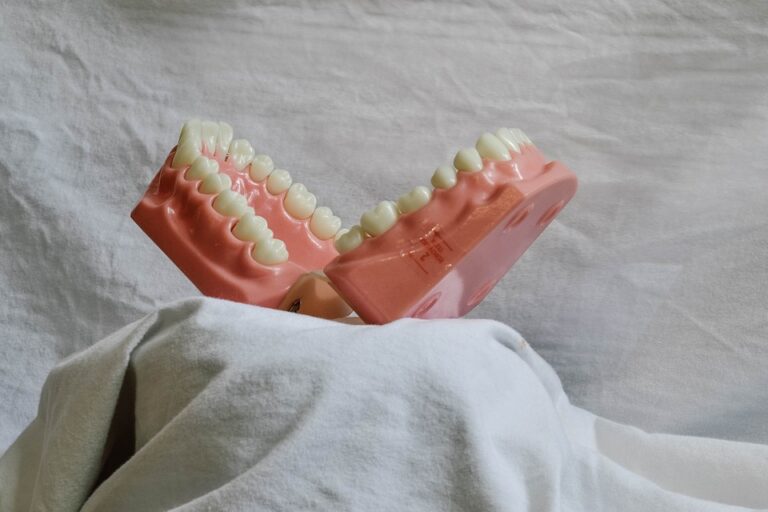
Can A Dental Infection Cause Heart Problems?
It a question that sound like it’s from a TV show, not real life. Can a bad tooth really lead to a sick heart? I used to think my mouth was its own island, not connected to my body. A cavity was a bother, for sure, but it wasn’t a “health” problem like high blood pressure was. I was wrong. Very, very wrong. Danger wrong.
This article is the story of my wake-up call. It started with a toothache that won’t go away, one I tried to not think about. It ended with a serious warning from my dentist that changed how I see my health for good. I’m going to share all the stuff I learned—the science, the dangers, and the easy things I do now to keep me safe. If you ever waited to go to the dentist or thought a little tooth pain is no big deal, I promise this is good to read. It could be one of the most important piece of teeth information you ever see.
Article Overview
- My Scary Story: The Toothache I Did Not Listen To
- How Mouth Germs Get to the Heart
- The Main Bad Guys: The Kinds of Tooth Infections
- Heart Problems: What is the Real Danger to Your Heart System?
- Signs You Need to Watch For
- My Plan: How I Made Myself Stronger with Good dental care
- Last Words: Your Mouth is a Door, Not a Wall
My Scary Story: The Toothache I Did Not Listen To
It all start with a low, always-there pain in my bottom jaw. You know that feel—the kind you hope is just food stuck somewhere. For some days, I did that. I rinse with warm salt water, chewed on the other side, and told myself it would leave.
But it didn’t. The low pain got more sharp, into a mean, beating pain. It become the bad sound to my days and nights. Drinking cold water feel like a electric shock in my jaw. I started not eating some foods. I was mad and cant focus at work. Still, I kept waiting. In my head, a dentist trip meant time from work, something not comfortable, and a bill I not want to pay. I had things to do, family plans—the same excuses we all have. I told myself it was just a deep cavity I’d fix “later.”
That “later” was another week. The pain was my friend all the time. Then, other things started to happen. The side of my face start to feel sore and a little puffy. I felt sick all over—like I was gettin the flu. I was tired, achy, and had a small fever.
That when my wife said no more. “That’s it,” she say, with her phone. “You look bad. I’m callin the dentist, and you’re going. Today.” She didn’t ask. She told me, and I am so glad she did.
At the dentist office, it didn’t take long for him to find the problem. My dentist look at my puffy gum, tapped the bad tooth, and I almost jump up. The x-ray showed what he thought: I had a dental abscess. It was a bad pocket of yucky stuff, deep at the root of my tooth, from a germ infection that was out of control. The infection was getting worse for weeks.
He right away started a root canal to drain the abscess and save my tooth. But the talk we had then was what really scared me. When he was telling me about what he was doing, he stopped, took his glasses off, and looked at me very serious.
“You’re very lucky you came in,” he said, and I knew he meaned it. “A infection this big don’t just stay in your mouth. Think of it like a leaky germ factory. Those germs can, and do, get in your blood. We take this very serious because it can have problems for your whole body, especially your heart.”
My heart? I was shocked. I just sat, my mouth all numb, trying to get what he said. I always put my health in different boxes. Teeth problems was in one box; big health problems were in another. The idea that a toothache—something I thought was just a bother—could be a danger to the most important organ in my body never, ever came to my mind.
That day, I left the dentist office not just with a plan for my tooth, but with a big and scary new idea of how our bodies are connected in so many ways. That talk was my wake-up call. It made me learn all I could about this secret danger, and it’s why I’m tellin my story to you now.
How Mouth Germs Get to the Heart
After that dentist visit that opened my eyes, I needed to know the “how.” It still seem hard to believe. How could germs from my tooth go all the way to my heart and make problems? It turns out the road is very direct and scary.
Think your mouth is a busy city. When it healthy, its all good. But when you dont clean your mouth good, some “bad” germs start to grow too much and make trouble, like gum disease or cavities. Now, think of a big problem in that city—like a deep cavity or a sick gum line.
This is where the trip start.
Step 1: Getting into the Blood (Bacteremia)
Your gums have lots of tiny blood tubes. They are right there, under a thin skin. When you has a tooth infection like gingivitis (early gum disease) or periodontitis (bad gum disease), your gums get swollen, red, and bleed easy.
An abscess, like mine, is more worse. It’s a packed, yucky pocket of germs.
Every time you chew, brush, or even just get a teeth cleaning, you can make tiny rips in these sick gum parts. This make a door for mouth germs to get out of the mouth and go into your blood. This thing—germs getting in the blood—has a doctor name: bacteremia.
It happen more than you think. It can happen a little even if you’re healthy. The different is, a healthy body fastly finds and kills these germs. But when you has an infection that dont go away and is real bad in your mouth, you’re always feeding bad germs into your blood flow, making it too much for your body’s protection.
Step 2: The Trip and Sticking On
Once in the blood, these germs is like secret riders on a fast road. They can go anywhere your blood go—which is everywhere. Their final stop can be your heart.
For most healthy hearts, these germs just go through. But if you already have heart problems, it’s a new story. The real danger is for people with:
- Heart valves that is broke: From being born with a problem, a past sickness, or getting old.
- Fake heart valves: These things are a top spot for germs to stick to.
- You had endocarditis before: If you had it once, you more likely to get it again.
The tops of these broke or fake valves are not all smooth. They can have rough spots where germs can easy stick and start to make a home, like shells on a boat.
Step 3: Making Swelling and Infection
This is where the real bad stuff happen. Once the germs stick to the inside lining of the heart or the heart valves, they can cause a serious infection called infective endocarditis. This is a thing that can kill you where the germs make clumps, called vegetations, on your heart valves. These clumps can break off, go to other body parts, and cause strokes, hurt organs, or other very bad problems.
But it’s not just about a direct infection. The other big thing is inflammation, or swelling. The germs from your mouth, and the swelling they make, can help cause atherosclerosis, which is when your arteries get hard and tight.
Think of it like this: your body see the germs as bad guys and starts a swelling attack. This swelling thats always there a little bit, because of your tooth infection, can hurt the lining of your arteries. Your body then try to fix this hurt with cholesterol and other things, making plaque. Over time, this plaque get bigger, make your arteries tight, and can lead to blood clots, heart attacks, and strokes.
So, the link isn’t just one thing. It’s a double problem: the danger of a direct, can-kill-you infection like endocarditis, and the danger of swelling that makes heart disease go faster.
The Main Bad Guys: The Kinds of Tooth Infections
Not all tooth problems have the same danger. When my dentist told me the danger, he was clear about what infections are the most worry. It’s not about a small cavity on top. The real problem is infections that let germs get deep in your body.
Here are the main bad guys I learned to look for:
1. Periodontitis (Bad Gum Disease)
This is the big one. I used to think gum disease was just gums bleeding, but it much more.
- Gingivitis: This is the first part, you can fix it. Your gums might be red, puffy, and bleed when you brush. Now, the infection is still on top.
- Periodontitis: If you dont fix gingivitis, it gets worse to periodontitis. This is where the infection go deeper. The germs start to break the gum and the bone that hold your teeth. This make “pockets” between your gums and teeth. These pockets are deep, dark, and has no air—the best place for the meanest germs to grow. Because the gum is so swollen and hurt, it’s like a open cut in your mouth, giving germs a free ticket to your blood.
2. Dental Abscess
This is what I had, and it is as dangerous as it sound. An abscess is a pocket of bad stuff from a germ infection. It can be in two main spots:
- Periapical Abscess: This is at the end of the tooth’s root. It usually from a cavity you didnt fix that let germs get in the pulp (the middle part of the tooth with nerves and blood). The infection kill the pulp and go down to the root end.
- Periodontal Abscess: This is in the gum pockets of a person with periodontitis.
An abscess is like a bacteria bomb with lots of pressure. The pressure is what make that bad, beating pain. If a dentist dont drain it and fix it, that pressure can push the germs into the parts around it and, yes, the blood.
3. Deep, Unfixed Cavities (Dental Caries)
A small cavity on the enamel (the hard outside part) is not a right-away danger to your heart. The problem start when the rot gets worse. It eats through the enamel, then the softer dentin part, and then gets to the pulp.
Once the germs get to the pulp, they won. The pulp have the tooth’s nerve and blood. It’s a straight road to the rest of your body. This is how a simple cavity, when you dont listen to it, can become a pulp infection and then a periapical abscess.
Knowing these special problems helped me see that good dental care isn’t just for a nice smile. It’s about stopping these special, dangerous infections from ever starting.
Heart Problems: What is the Real Danger to Your Heart System?
So we know *how* the germs can travel. But what *do* they do when they get there? The link is not one straight line. Mouth germs can help cause heart problems in a few ways, from a direct infection to slow, hidden damage.
The Direct Attack: Infective Endocarditis
This is the most direct and dangerous link. Like I said, infective endocarditis is when germs from your blood (like from a dental abscess) stick to the inside lining of your heart rooms or valves (the endocardium).
I learned to think it like this: Think of a river floor that is all smooth. Water go over it easy. Now think that river floor has sharp rocks or dips (like a broke heart valve). Stuff in the water is more like to get stuck on those rough parts. The germs is the stuff.
Once they get stuck, they grow and make infected clumps. These clumps can:
- Break Heart Parts: They can really eat your heart valves, making them leak or stop working.
- Break Off and Travel: A piece of the infected clump can get free, go in the blood, and get stuck in another body part. If it go to the brain, it can make a stroke. If it go to the lungs or kidneys, it can make damage that can kill you.
Endocarditis is a big doctor emergency that needs weeks of strong medicine in your blood and, a lot of times, surgery to fix or change the broke heart valves. It dont happen a lot, but what happens is very bad, and bad mouth health is a known danger for it.
The Slow Fire: Atherosclerosis (Hard Arteries)
This is the more normal, long time link. Atherosclerosis is why most heart attacks and strokes happen. It’s when plaque (a mix of fat, cholesterol, calcium, and other stuff) grows inside your arteries.
How does a tooth infection do that? Swelling.
- Swelling All Over: A tooth infection that’s always there like periodontitis puts your whole body in a state of always a little bit of swelling. Your body is always “on,” fighting the infection in your mouth.
- Artery Damage: This always-there swelling can hurt the soft inside walls of your arteries.
- Plaque Grows: The body try to fix this hurt, but this fixing can go bad. It makes plaque grow where it is hurt. The same kinds of germs from sick gums (like Porphyromonas gingivalis) has even been found inside these plaques in arteries.
- Tighter and Clots: Over time, this plaque grow, making arteries tighter and not as bendy. This can stop blood flow. More worse, the plaque can break, making a blood clot right there. If that clot block the artery all the way, it stop blood to the heart (a heart attack) or the brain (a stroke).
So, your abscess might not *right away* cause a heart attack tomorrow, but it helps the slow fire of swelling that can make one happen years later.
Signs You Need to Watch For
My biggest mistake was not listening to the first signs. I learned the hard way that my body was sending me clear messages that something was not right. If I had paid attention more early, I could of stopped a lot of pain and a very big danger.
From what I went through and what I learned, here are the warning signs—in your mouth and in your body—that you should take serious. Do not wait.
Mouth Warning Signs
These are the red flags that your mouth health is not healthy and you could be in danger of a deeper infection:
- A toothache that dont go away: Specially a beating, bad pain that is always there. This is the main sign of a sick pulp or an abscess.
- Pain When You Chew: If it hurt to push on a tooth, it a sign of swelling around the root.
- Feeling Hot or Cold: A feeling that stay long after the hot or cold is gone can mean nerve problems inside the tooth.
- Puffy or Sore Gums: Healthy gums don’t hurt. Soreness, red, and puffiness are signs of gingivitis or periodontitis.
- Gums That Bleed Easy: If your gums bleed all the time you brush or floss, that’s not normal. It a big sign of gum swelling.
- A Pimple on Your Gum: This is many times a tunnel the body make to get bad stuff out of an abscess. It might even let out a bad tasting liquid. This is a very big alarm.
- Bad Breath that Stays or a Bad Taste: This can be a sign of a secret infection or bad gum disease.
- Puffy Face or Jaw: This was a late sign for me. It mean the infection is going from the tooth to the parts around it.
Whole Body Warning Signs
Sometimes, the infection can get so big it makes you sick all over your body. If you have these with any of the mouth signs, you need help right away.
- Fever: A sign your body is fighting a big infection.
- Feeling sick all over: Feeling tired and achy for no reason. This was another sign I did not listen to.
- Lumps in your neck: You might feel sore lumps under your jaw or in your neck as your body’s cleaning system tries to fight the infection.
- Hard to Swallow or Breathe: In bad cases that dont happen a lot, swelling from a tooth infection can go to the neck and air tubes. This is a doctor emergency—go to the ER.
My advice now is easy: treat your mouth like the important part of your body it is. If it send you a pain message, listen. It’s not being dramatic; it’s asking for help.
My Plan: How I Made Myself Stronger with Good Dental Care
After my abscess scare, I changed all my ways for mouth health. I went from a patient who waits—only going to the dentist when something hurt—to one who is thinking ahead. My goal now is to stop problems, not just fix them. Here’s the easy, good plan I made.
1. I Got Serious on the Basics (No Excuses)
This sound simple, but I got real serious. Doing it all the time is key.
- Brushing: I brush for two whole minutes, two times a day, with a soft brush. I really get the gumline, with the brush at a 45 degree angle. It’s not about brushing hard; it’s about getting everywhere.
- Flossing: This was my big problem before. Now, I floss every night. Flossing is the only way to get plaque and germs from between the teeth and under the gums, where periodontitis start. I learned to see it not as work, but as a big job to break up the germs homes.
- Mouthwash: I use it last to help lower the germs in my whole mouth.
2. I Never, Ever Miss My Dentist Times
I now make my next cleaning time before I even leave the dentist office. I go every six months, for sure. The cleanings at the dentist are the only way to get off tartar (hard stuff on teeth), which you can’t get off at home. My dentist and hygienist can also see early signs of problems, like a new cavity or a little gingivitis, way before they get to be big infections.
3. I Got a New Fix
When I had my root canal, the tooth needed a crown to keep it from breaking and to close it so no more germs get in. My dentist and me talked about the best ways. He told me how much new dentistry has gotten better. For example, he work with a high-tech digital dental lab that use scans of my mouth to make a crown that fit perfect. This make sure there are no small spaces where germs could get in later. We picked a crown made from a very strong ceramic that look natural, a material made great by places like an emax dental lab, which is known for being strong and for looks good. Getting a perfect fit is very important for being healthy a long time, and I was amazed how tech from a top arch dental lab could make something so perfect just for me. This showed me that spending money on good repair work is a big part of stopping future problems.
4. I Changed How I Eat
I started to watch what I eat and drink more. Sugary foods and drinks are food for the germs that make cavities. I haven’t stopped them all, but I have a lot less. I drink more water all day, which help wash away food and stop acids.
5. I Listen to My Body
This is the biggest lesson. I dont ignore little pains anymore. If something feel wrong in my mouth for more than a day or two, I call my dentist. It is that easy. A 30-minute check is so much more better than a emergency root canal and a talk about my heart.
This plan is not hard or cost a lot. It’s about doing it all the time and respecting the link between my mouth and my whole health.
Last Words: Your Mouth is a Door, Not a Wall
My story started with pain and being scared, but it ended with me feeling strong. The biggest thing I learn is that the mouth is not a strong wall that is closed; it’s a door to the rest of your body. What happen in your mouth do not stay in your mouth.
The link between a tooth infection and your heart is real, science proves it, and it’s something we all can change. The germs that make gum disease and abscesses are the same bad guys that can help cause things that can kill you like endocarditis and heart disease.
Not listening to a toothache or not going to a dental cleaning isn’t saving you time or money. It’s a risk with your whole health. I took that risk, and I was lucky. I got a wake-up call, not a disaster.
I hope my story is a wake-up call for you, too. Take your mouth health serious. Do good cleaning every day. See your dentist. And please, if something hurt, listen to your body and get it looked at. Your heart might be happy you did.








